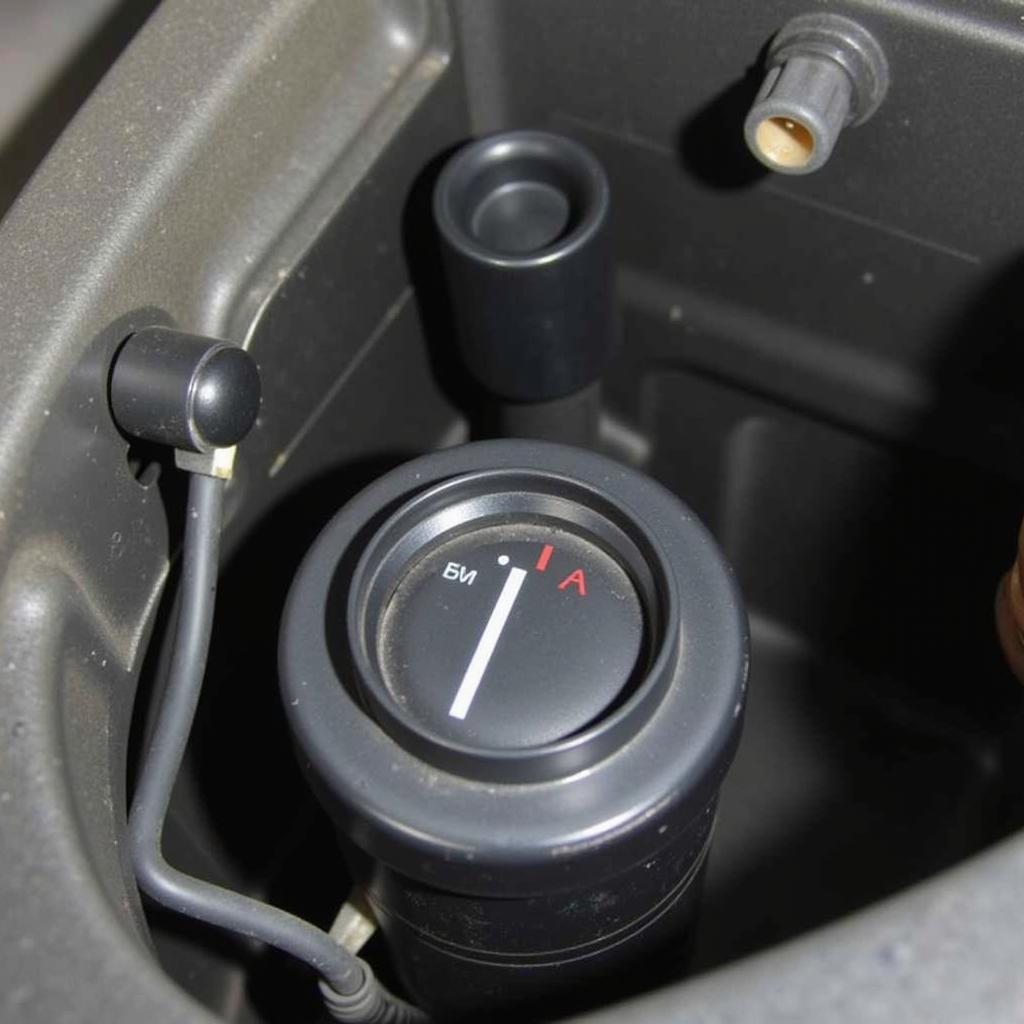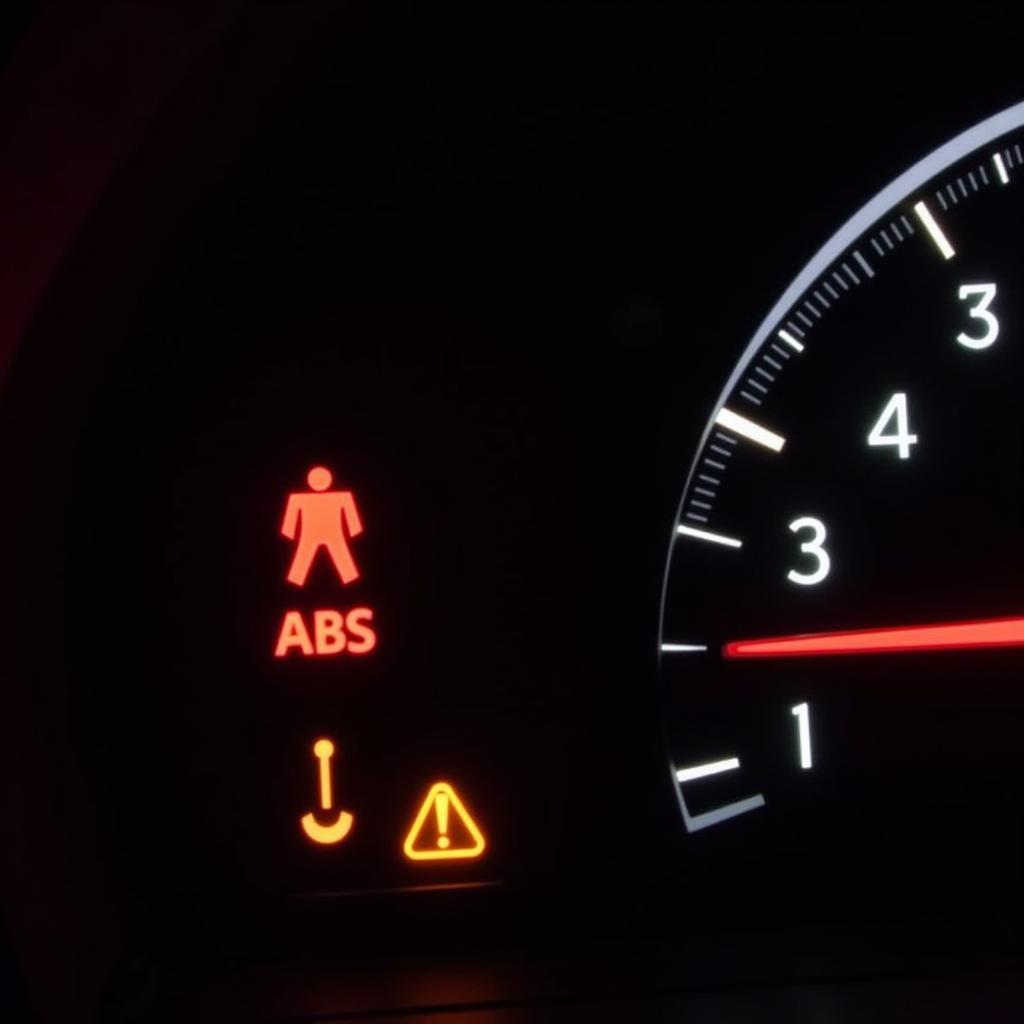The brake warning light on your 2005 Nissan Armada is a critical safety feature that illuminates on your dashboard when the vehicle’s computer system detects a potential issue within the braking system. Ignoring this warning light could lead to reduced braking performance and potentially dangerous situations. This comprehensive guide will delve into the common causes behind a 2005 Armada brake warning light, outline effective solutions, and provide preventative tips to maintain optimal braking system health.
Understanding Your 2005 Armada’s Brake Warning System
Your 2005 Nissan Armada utilizes a sophisticated electronic brake system that relies on various sensors and components to ensure safe and efficient braking. When the brake warning light illuminates, it signals a problem within this system, often categorized into two main reasons:
- Hydraulic Brake System Issues: This system utilizes brake fluid pressure to engage the brake calipers and stop the vehicle. A leak in this system, a low brake fluid level, or a faulty brake caliper can trigger the warning light.
- Electronic Brake System Malfunctions: Modern vehicles like the 2005 Armada utilize electronic components such as ABS (Anti-lock Braking System) modules, brake sensors, and electronic brake force distribution systems. Malfunctions within these electronic components can also activate the warning light.
Common Causes of a 2005 Armada Brake Warning Light
While the illumination of the brake warning light can be alarming, it’s crucial to understand the potential reasons behind it. Here are some of the most common culprits:
-
Low Brake Fluid Level: One of the most frequent reasons for the brake warning light is a low brake fluid level. Brake fluid naturally depletes over time, and leaks can exacerbate this issue.
-
Worn Brake Pads: As your Armada’s brake pads wear down, the brake fluid level in the reservoir decreases, potentially triggering the warning light.
-
Brake Fluid Leak: Leaks within the brake lines, hoses, or calipers can lead to a significant loss of brake fluid, directly affecting braking performance and illuminating the warning light.
-
Faulty Brake Caliper: A malfunctioning brake caliper can lead to uneven brake pad wear, dragging brakes, and potentially a brake fluid leak – all factors that can activate the brake warning light.
-
ABS Sensor Issues: The ABS system relies on sensors to monitor wheel speed and prevent wheel lockup during hard braking. If an ABS sensor malfunctions or becomes dirty, it can disrupt the system and trigger the warning light.
-
Faulty Brake Light Switch: Your Armada’s brake light switch is responsible for activating the brake lights when you press the brake pedal. If this switch malfunctions, it can also trigger the brake warning light.
 Brake Fluid Reservoir
Brake Fluid Reservoir
Troubleshooting and Solutions
Determining the exact cause of the brake warning light often requires a systematic approach. Here’s a step-by-step guide to help you troubleshoot and address the issue:
-
Check the Brake Fluid Level: Park your Armada on a level surface and locate the brake fluid reservoir under the hood. Check the fluid level – if it’s below the “MIN” mark, add brake fluid specifically designed for your vehicle.
-
Inspect for Brake Fluid Leaks: Carefully examine the area around the brake master cylinder, brake lines, hoses, and calipers for any signs of leaks. Look for wet spots, drips, or puddles of brake fluid.
-
Inspect the Brake Pads: If you’re comfortable with basic car maintenance, you can remove a wheel to visually inspect the brake pads. If the pads are worn down to less than 1/4 inch, they need replacement.
“Checking your brake pads regularly is a crucial safety practice,” emphasizes John Miller, a certified automotive technician with over 20 years of experience. “Worn brake pads not only affect your stopping distance but can also damage other brake components.”
-
Test the Brake Light Switch: Depress the brake pedal and ensure that all three brake lights illuminate. If the lights don’t turn on, the brake light switch might be faulty and require replacement.
When to Seek Professional Help
While the steps above can address some common causes of a brake warning light, certain issues require the expertise of a qualified mechanic:
-
Persistent Brake Warning Light: If the warning light remains illuminated after topping off the brake fluid and addressing any visible leaks, it’s essential to have a professional diagnose the problem.
-
Soft or Spongy Brake Pedal: A soft or spongy brake pedal feel often indicates air in the brake lines, requiring bleeding by a professional to restore proper braking pressure.
-
ABS Warning Light: If the ABS warning light illuminates alongside the brake warning light, it indicates a potential problem with the ABS system, which requires specialized diagnostic equipment.
-
Lack of Mechanical Expertise: If you’re uncomfortable performing the troubleshooting steps or lack the necessary tools, it’s always safest to consult a qualified mechanic.
“Attempting to repair complex brake system issues without proper knowledge and tools can lead to further damage and safety risks,” warns Miller. “It’s always best to err on the side of caution and seek professional assistance when in doubt.”
Preventative Maintenance Tips
Preventing brake problems is always preferable to dealing with them after they arise. Here are some proactive measures to maintain your 2005 Armada’s braking system:
-
Regular Brake Fluid Checks: Inspect your brake fluid level at least once a month and top it off as needed with the correct type of brake fluid.
-
Timely Brake Pad Replacements: Adhere to your Armada’s recommended brake pad replacement schedule.
-
Inspect Brake Lines and Hoses: Regularly check your brake lines and hoses for cracks, bulges, or leaks, especially if you live in a region with harsh weather conditions.
-
Flush the Brake Fluid: Brake fluid should be flushed and replaced according to your Armada’s maintenance schedule to prevent moisture contamination and maintain optimal performance.
Conclusion
The brake warning light in your 2005 Nissan Armada is a crucial safety indicator that should never be ignored. By understanding the common causes, following the troubleshooting steps, and embracing preventative maintenance practices, you can help ensure the optimal performance and safety of your vehicle’s braking system. Remember, a well-maintained brake system is essential for safe and confident driving.


